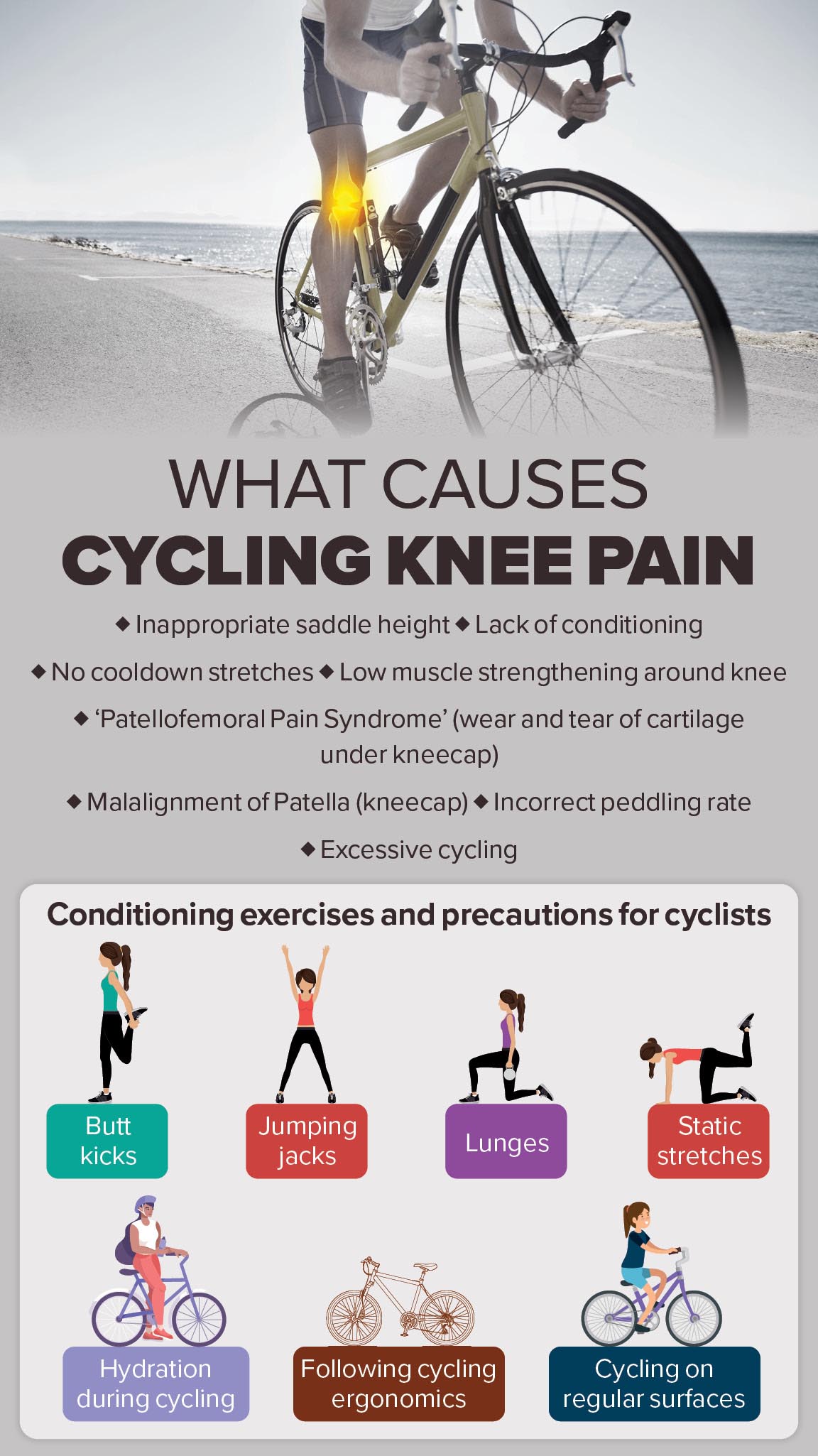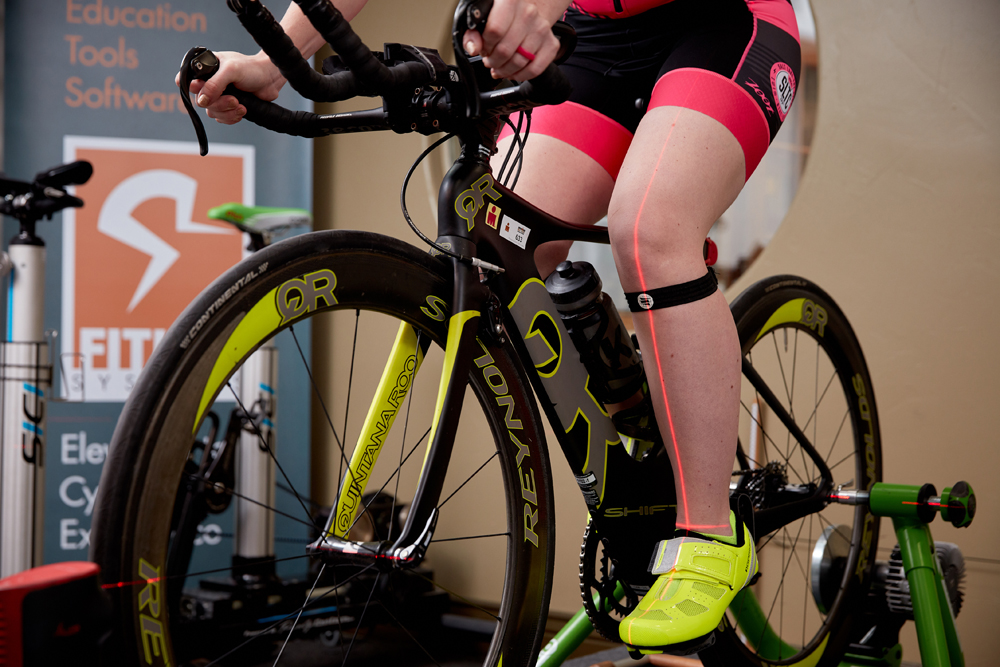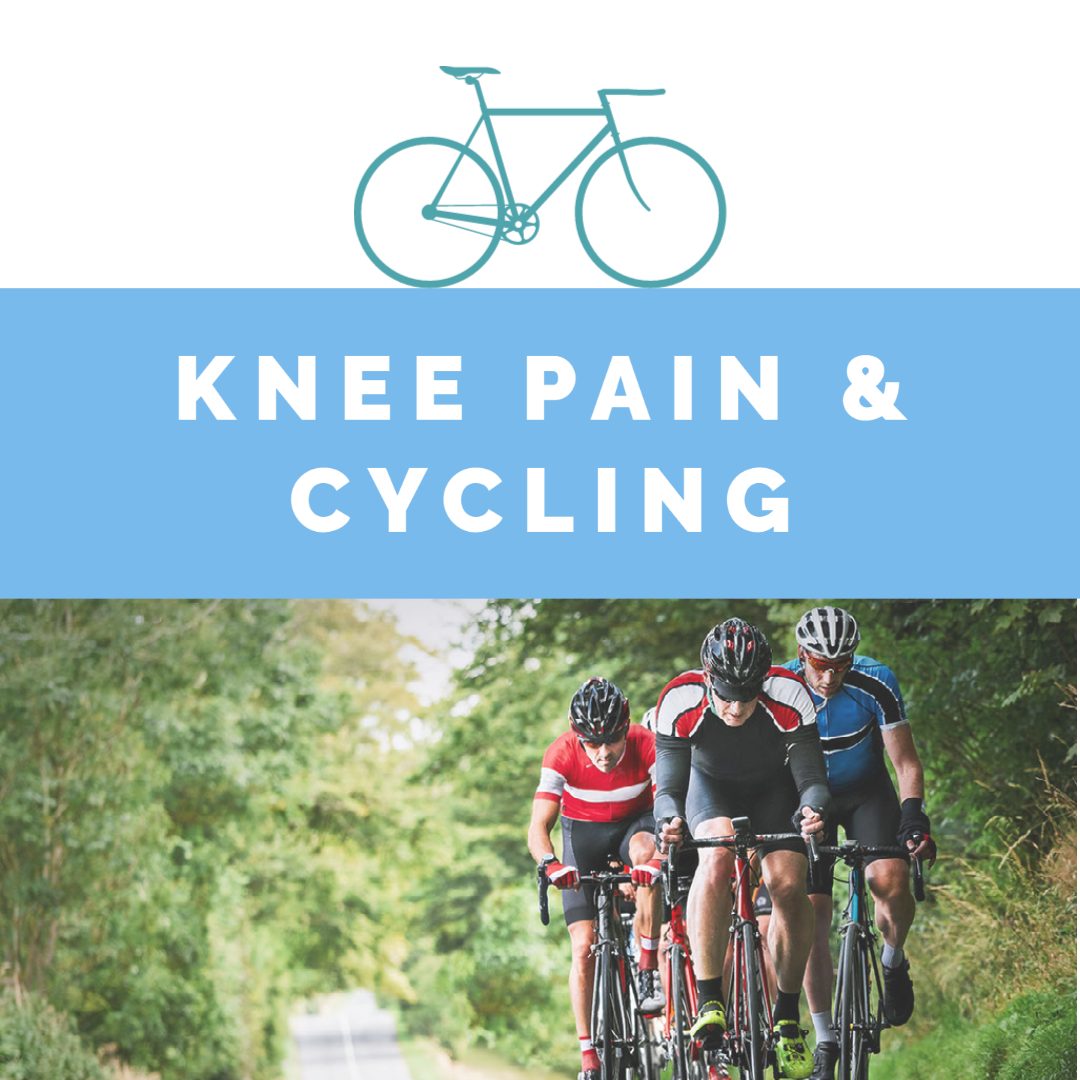Identifying the Source of Knee Discomfort Post-Cycling
Cycling is a popular and low-impact form of exercise, but it can sometimes lead to discomfort or pain in the knees. Knees hurting after cycling is a common issue that many cyclists experience at some point. The pain can manifest in different ways, such as patellofemoral pain, iliotibial band syndrome, or tendonitis. Patellofemoral pain, also known as “runner’s knee,” occurs when the cartilage under the kneecap becomes irritated or worn down. Iliotibial band syndrome results from the inflammation of the iliotibial band, a thick band of tissue that runs from the hip to the knee. Tendonitis, on the other hand, is the inflammation of the tendons connecting the muscles to the bones.
Several factors can contribute to knee pain after cycling. Incorrect bike fit is one of the most common causes, as it can lead to excessive strain on the knees. Poor pedaling technique, such as pushing down too hard on the pedals or not engaging the core, can also contribute to knee discomfort. Insufficient warm-up or cool-down routines can exacerbate the issue, as they fail to prepare the muscles and joints for the physical demands of cycling or help them recover properly.
Optimizing Bike Fit to Alleviate Knee Strain
A proper bike fit is crucial for preventing knee pain after cycling. A poorly adjusted bike can lead to excessive strain on the knees, causing discomfort and potentially sidelining you from your favorite activity. Key components of a bike fit include saddle height, saddle fore/aft position, handlebar height, and cleat position. Adjusting these elements can significantly reduce the risk of knee pain and improve your overall cycling experience.
Saddle height is one of the most critical bike fit components. When the saddle is too high or too low, it can cause undue stress on the knees. A general rule of thumb is to set the saddle height so that your knee has a slight bend when your pedal is at the bottom of the stroke. This position ensures that your legs are neither overextended nor excessively bent, reducing the risk of knee pain.
Saddle fore/aft position, handlebar height, and cleat position also play essential roles in preventing knee pain. The saddle should be positioned horizontally, with your nose pointing straight ahead. If the saddle is tilted up or down, it can cause your hips to rock side-to-side, leading to knee discomfort. Handlebar height should allow for a comfortable, upright position, while cleat position should position your foot so that your knee is directly above the pedal spindle when the crank arm is in line with the seat tube.
While some cyclists can make self-adjustments to their bike fit, it is often beneficial to consult a professional bike fitting service. These services use advanced techniques and technology to ensure a precise bike fit, reducing the risk of knee pain and improving overall cycling efficiency.
Improving Pedaling Technique for Smoother Cycling
Pedaling technique plays a significant role in knee comfort during and after cycling. An inefficient pedaling technique can lead to excessive strain on the knees, causing discomfort and potentially contributing to knees hurting after cycling. By focusing on a circular pedaling motion, proper cadence, and engaging the core, cyclists can improve their pedaling efficiency and reduce the risk of knee pain.
A circular pedaling motion involves smooth, even pressure on the pedals throughout the entire pedal stroke. This technique ensures that the muscles work consistently, reducing the strain on the knees. To practice a circular pedaling motion, focus on pulling up on the backstroke and pushing down on the downstroke, maintaining a consistent pressure throughout.
Cadence, or the number of revolutions per minute (RPM) of the pedals, is another crucial factor in pedaling technique. Aiming for a cadence of 80-100 RPM can help reduce the strain on the knees and improve overall cycling efficiency. To maintain a consistent cadence, use a cycling computer or smartphone app to monitor your RPM and adjust your pedaling speed accordingly.
Engaging the core during cycling is essential for maintaining proper form and reducing the risk of knee pain. A strong core helps stabilize the body, preventing unnecessary movement and strain on the knees. To engage the core, focus on drawing your belly button towards your spine and maintaining a neutral spine position while cycling.
Preparing the Body for Cycling: Warm-Up and Cool-Down Techniques
Warming up and cooling down before and after cycling sessions can significantly reduce the risk of knee pain and injuries. These simple routines help prepare the muscles and joints for physical activity and aid in recovery, making them essential components of any cycling regimen. By incorporating dynamic stretches and exercises before cycling and static stretches after the ride, cyclists can minimize the likelihood of knees hurting after cycling.
Dynamic Stretches and Exercises
Dynamic stretches involve active movements that increase the range of motion, blood flow, and body temperature. Perform these stretches before cycling to prepare the muscles and joints for the ride. Some suitable dynamic stretches include leg swings, lunges with a twist, high knees, and butt kicks.
Static Stretches
Static stretches involve holding a stretch for a specific duration, typically between 15-30 seconds. These stretches help cool down the body, reduce muscle tension, and improve flexibility. Incorporate static stretches after cycling to aid in recovery and prevent knee pain. Suitable static stretches for cyclists include hamstring stretches, quad stretches, calf stretches, and IT band stretches.
Strengthening Exercises for Cyclists: Building Supporting Muscles
Strength training plays a vital role in preventing knee pain for cyclists. By targeting the muscles that support the knees, cyclists can improve their pedaling efficiency, reduce strain on the knee joints, and minimize the risk of knees hurting after cycling. Incorporate the following exercises into your routine, focusing on proper form and gradually increasing the resistance or repetitions as you gain strength.
Quadriceps Exercises
Quadriceps are the large muscles at the front of the thigh and are crucial for knee stability and extension. Strengthen your quadriceps with exercises such as squats, lunges, and leg presses.
Hamstrings Exercises
Hamstrings are the muscles at the back of the thigh and work together with the quadriceps to extend the knee. Strengthen your hamstrings with exercises such as deadlifts, glute bridges, and hamstring curls.
Glutes Exercises
Glutes, or buttocks muscles, play a significant role in stabilizing the knee during cycling. Strengthen your glutes with exercises such as hip thrusts, clams, and donkey kicks.
Calves Exercises
Calves are the muscles at the back of the lower leg and help propel the pedals during cycling. Strengthen your calves with exercises such as calf raises, heel drops, and ankle hops.
For each exercise, perform 2-3 sets of 8-12 repetitions, resting for 30-60 seconds between sets. As you gain strength, gradually increase the resistance or the number of sets and repetitions. Remember to warm up before starting your strength training routine and cool down afterwards with static stretches to promote recovery and flexibility.
Managing Knee Pain: When to Seek Professional Help
While minor knee discomfort after cycling is relatively common, there are instances when it’s necessary to seek professional help. If you experience any of the following warning signs, consult a healthcare professional or physical therapist for a proper diagnosis and treatment plan to address your knee pain.
- Severe pain: If the pain is intense or persistent, even after rest and home treatment, it may indicate a more serious issue that requires medical attention.
- Swelling: Noticeable swelling around the knee joint could be a sign of inflammation or injury, and should be evaluated by a healthcare professional.
- Reduced mobility: If your knee pain limits your ability to bend, straighten, or rotate your knee, it’s essential to seek professional help to prevent further damage or complications.
- Persistent pain: Knee pain that continues for several days or weeks, despite attempts to address the issue, may require medical intervention to resolve.
A healthcare professional or physical therapist can provide a proper diagnosis, recommend appropriate treatment options, and help you develop a plan to prevent future knee pain. Treatment options may include physical therapy, medication, or in some cases, surgery. By addressing knee pain promptly, you can minimize the risk of long-term damage and get back to enjoying your cycling routine.
Selecting the Right Cycling Gear: A Comfortable Ride Awaits
The right cycling gear can make a significant difference in preventing knee pain and ensuring a comfortable, enjoyable ride. By investing in high-quality gear tailored to your individual needs and preferences, you can minimize the risk of discomfort and injury. Here are some tips for selecting the right cycling gear to keep your knees happy and healthy.
Padded Cycling Shorts
Padded cycling shorts provide an extra layer of cushioning between you and the bike seat, reducing pressure on the knees and other sensitive areas. Opt for high-quality, moisture-wicking materials and a snug, yet comfortable fit to ensure optimal performance and comfort.
Appropriate Footwear
Proper footwear is essential for maintaining a correct foot position on the pedals, which can help prevent knee pain. Choose cycling shoes that offer a secure fit, sufficient arch support, and compatibility with your pedal system. For those with existing knee issues, consider using cycling orthotics for additional support and alignment.
Knee Pads or Supports
In some cases, knee pads or supports can provide additional protection and stability for cyclists experiencing knee pain. Look for options that offer adjustable compression and support for the affected area, and consult with a healthcare professional or physical therapist for recommendations on the best type of knee support for your specific needs.
When selecting cycling gear, always prioritize quality, comfort, and a proper fit. By investing in the right gear, you can help prevent knee pain, improve your cycling experience, and reduce the risk of long-term injury.
Maintaining a Balanced Training Schedule: Avoid Overtraining and Injury
Overtraining is a common cause of knee pain for cyclists. By creating a balanced training schedule that includes cross-training activities, rest days, and periodization, you can minimize the risk of overtraining and associated knee pain. Here are some tips for maintaining a balanced training schedule:
Cross-Training Activities
Engaging in cross-training activities, such as swimming, yoga, or strength training, can help improve overall fitness while reducing the risk of overuse injuries. Cross-training also allows you to target different muscle groups, promoting balanced strength and flexibility.
Rest Days
Incorporating regular rest days into your training schedule is crucial for preventing overtraining and allowing your body to recover. Aim for at least one rest day per week, and adjust the frequency based on your individual needs and training intensity.
Periodization
Periodization involves structuring your training plan into specific phases, with varying intensities and volumes. By strategically alternating between high-intensity and low-intensity workouts, you can optimize performance while minimizing the risk of overtraining and knee pain.
Listening to your body and making adjustments to your training schedule as needed is essential for preventing overtraining and knee pain. By maintaining a balanced training schedule, you can enjoy a more comfortable, injury-free cycling experience.








